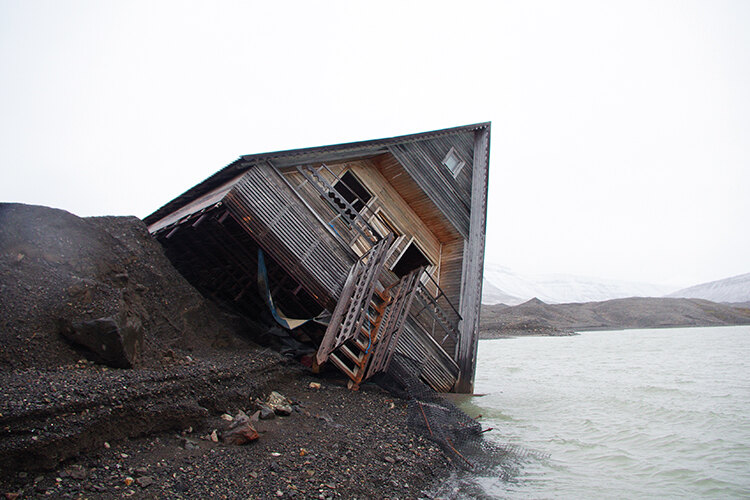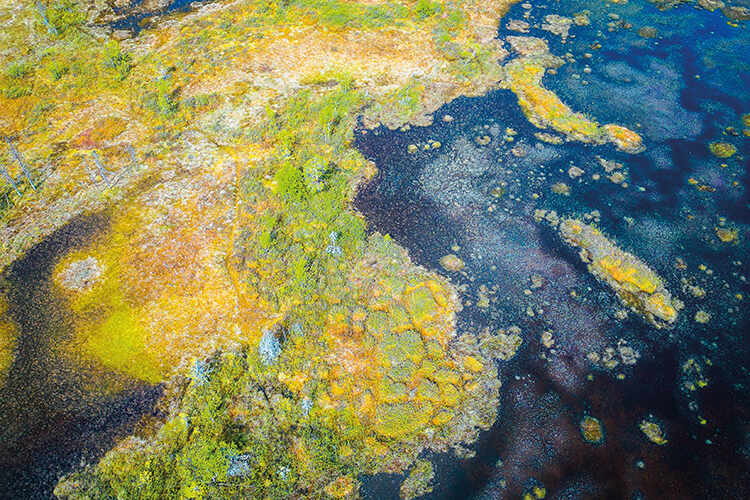
Melting permafrost doesn’t face a tipping point – it’s a linear problem we need to address now
The Arctic is warming up nearly four times faster than other parts of the world. In Siberia, where most of the land is permanently frozen – known as permafrost – this sudden change is causing the ground to thaw, sometimes for the first time in tens or even hundreds of thousands of years.
For many years, permafrost thaw has been seen as a ticking carbon time bomb, and one of nine proposed ‘tipping elements’, a term that describes large-scale components of the Earth system (such as the Amazon rainforest or the West Antarctic ice sheet) that may reach a tipping point – a threshold beyond which change is irreversible and self-perpetuating. However, a new study from polar researchers at the Alfred Wegener Institute, Germany, has found no evidence of a global climate tipping point in connection with permafrost.
According to climate scientist Jan Nitzbon, who led the research, the idea of permafrost being a global tipping element has long been controversial in the research community. He points to the 2008 study by climate change professor Timothy Lenton that first introduced the idea of tipping elements, and which put permafrost forward as a potential candidate. ‘Even back then,’ he says, ‘the researchers stated it would not fulfil their definition of a tipping element because the changes would be linear. But they still put it on the map and, somehow, it stuck there.’
Some time later, scientists identified that as permafrost thaws, bacteria in the soil speed up the decomposition of formerly frozen organic matter – dead animals, plants and microbes. As they feed on this matter, the bacteria release long-stored carbon into the atmosphere as carbon dioxide and methane. Scientists have suggested that once in the atmosphere, these greenhouse gases would further warm the planet, creating a strong positive feedback loop that thaws more permafrost, leading to rapid and widespread permafrost degradation.

‘This was something that the media picked up on – I’ve also seen it in educational material – and it has contributed to the idea of permafrost as a tipping element. But there is no evidence of self-amplifying internal processes that, from a certain degree of global warming, affect all permafrost and accelerate its thawing globally,’ says Nitzbon. ‘Moreover, the projected release of greenhouse gases wouldn’t lead to a global upsurge in warming by the end of the century. As such, portraying the permafrost as a global tipping element is misleading.’
That’s not to say that permafrost thaw isn’t a concern. ‘It’s definitely a concern,’ says Nitzbon, ‘and that’s also the point we want to make with this study.’ He explains that when talking about permafrost as a tipping element, there have often been suggestions of a corresponding temperature threshold. ‘That’s a problem, because it could lead to the misinterpretation that there’s some kind of a safety margin.’ Nitzbon emphasises that permafrost is already thawing, and at a rate that is increasing with every additional degree of global warming.
In their study, which compiled the available academic literature on the many processes that can influence and accelerate the thawing of permafrost – such as thermokarst lakes, which form deep, dark depressions that absorb more solar energy than the surrounding permafrost – and their own data analysis, Nitzbon and his colleagues also reveal that while there is no single global tipping point for permafrost, there are numerous local and regional ones that ‘tip’ at different times. As such, taking decisive action today is all the more important if our goal is to preserve as much permafrost as possible. Across the Arctic, permafrost is estimated to store about 1,460 billion to 1,600 billion tonnes of carbon – almost twice the amount that is currently in the atmosphere.
If global temperatures were to rise and fall again, then Arctic permafrost would reform. ‘So permafrost thaw itself isn’t irreversible,’ says Nitzbon. ‘But once the current permafrost deposits, which mostly formed during the last glacial period (the Pleistocene), have melted and the carbon stored within them has been released… that’s not something that can be reversed.’




